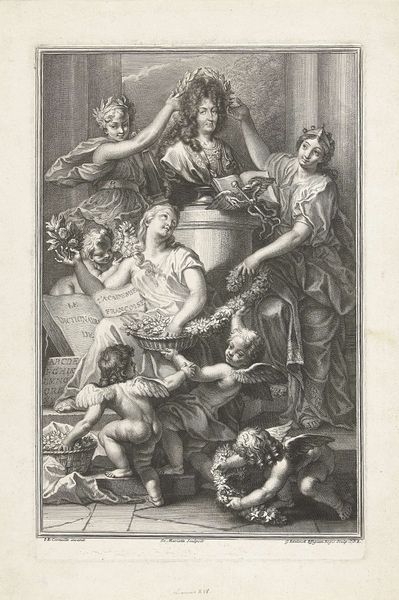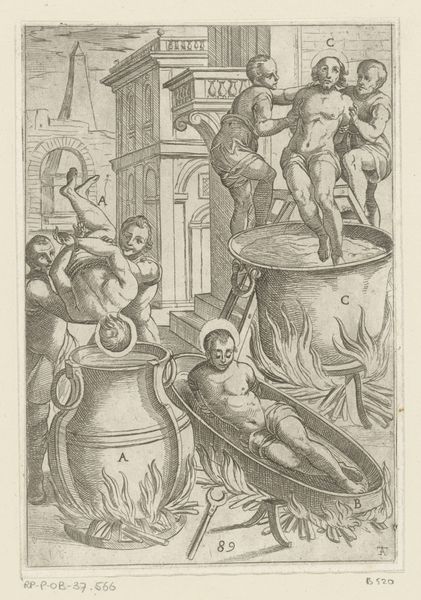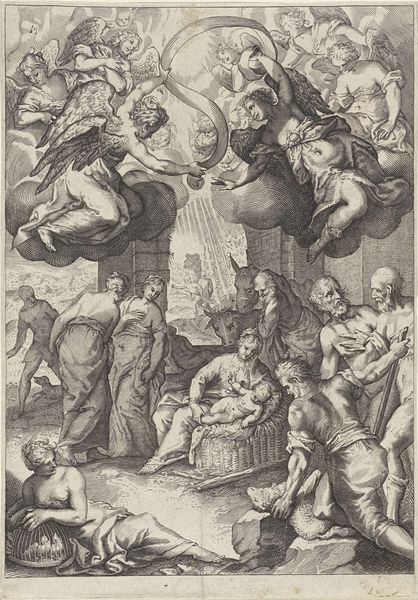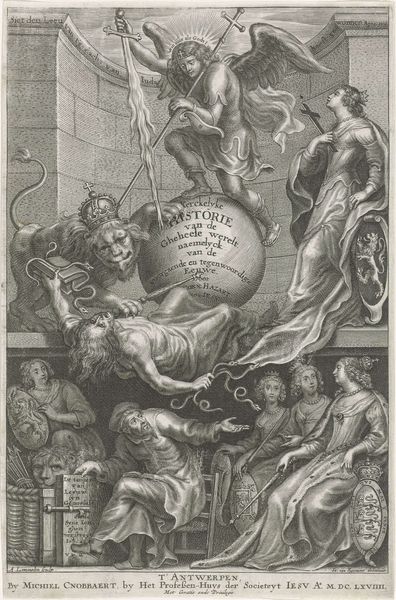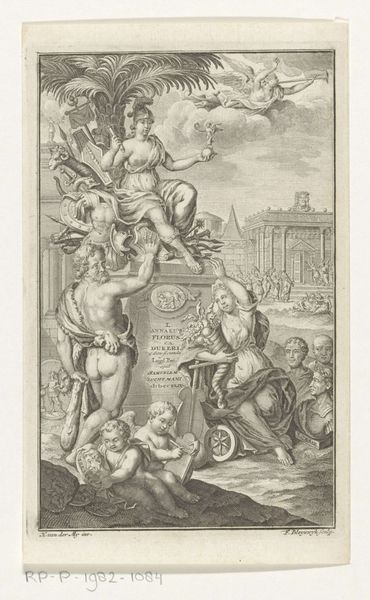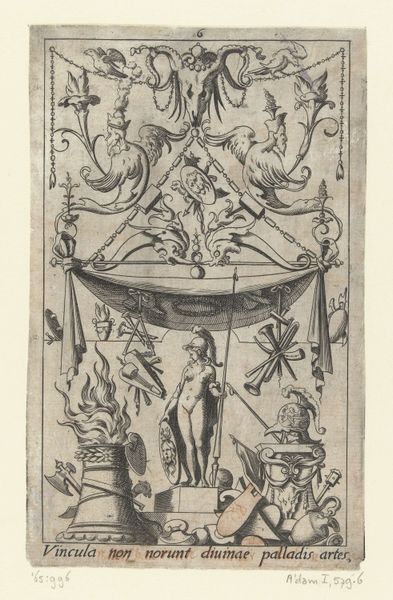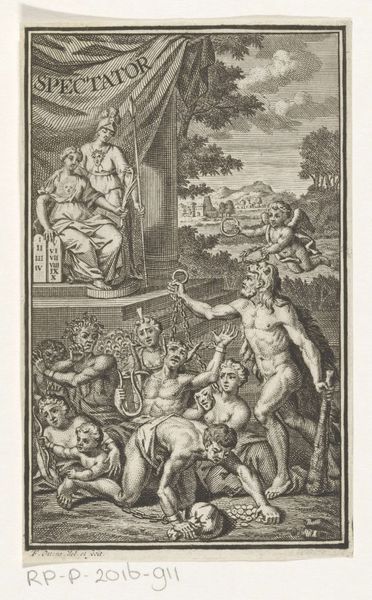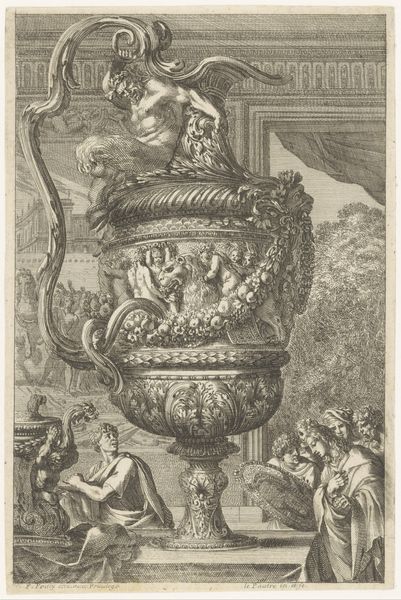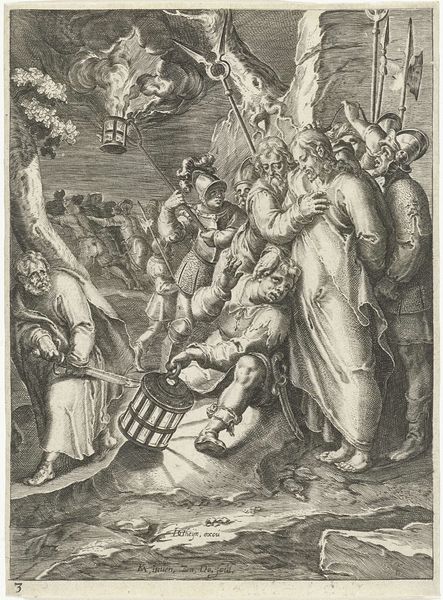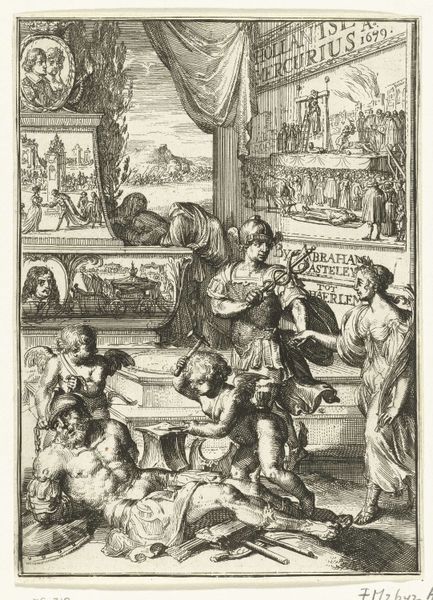
print, engraving
#
allegory
# print
#
old engraving style
#
mannerism
#
figuration
#
line
#
history-painting
#
italian-renaissance
#
engraving
Dimensions: height 165 mm, width 107 mm
Copyright: Rijks Museum: Open Domain
Curator: Here at the Rijksmuseum, we have a fascinating print by Giulio Bonasone dating from between 1501 and 1580, entitled "Epimetheus opent de urn van Pandora," or "Epimetheus Opens Pandora's Jar." Editor: It's overwhelmingly chaotic at first glance. The figures seem crammed together, struggling to escape this dark space in the style of old engraving. Curator: Indeed, that dense visual field is typical of Mannerism, and this engraving renders the classical myth of Pandora. She was given a jar—or, in some versions, a box—containing all the evils of the world. In this depiction, Epimetheus, Pandora's husband, opens the jar. Editor: You immediately notice the swarm of figures erupting. Look closely and you'll see labels—Libertas, Pax, Concordia—emanating upwards, with Vitius to the side, indicating this symbolic struggle between good and ill. Pandora is being depicted as 'Spes' meaning Hope in latin Curator: Right, the inscription “Spes” above the jar alludes to Hope being the only thing left inside after Pandora unleashed the evils upon humanity. Editor: And note that all-encompassing 'urn', sealed so firmly by the lid that requires incredible muscle, the very figure almost appearing dwarfed by it, suggesting this idea that curiosity unleashes forces larger than ourselves. Even those virtuous attributes swirling about in the scene still retain a dark and ominous visual tone despite their lofty virtues. Curator: I agree; while Hope remains, this print captures the enduring notion that societal disruption often stems from actions with unforeseen outcomes. It also mirrors the period's shifting intellectual landscape, grappling with the revival of classical thought amidst religious and political upheaval. Editor: The more you delve into these images, the more it becomes clear why such mythological scenarios fascinated this era. This print is a visual echo chamber of ancient anxieties made relevant anew, of our relationship to fate and the choices we make. Curator: It is striking how this scene from ancient times still sparks conversations in our world today. Perhaps that says something profound about enduring themes within the human experience.
Comments
No comments
Be the first to comment and join the conversation on the ultimate creative platform.
